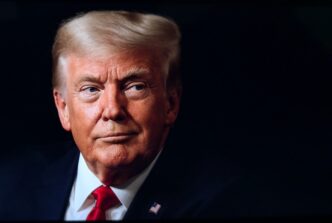Executive Summary
- President Donald Trump’s imposition of steep 50% tariffs on various Indian goods is causing significant disruption and financial strain across India’s manufacturing sectors, with trade experts likening the measures to an embargo.
- Key Indian industries such as garments, gems and jewellery, and shrimp exports are facing paused orders, mounting inventories, widespread job insecurity, and reduced competitiveness in the crucial U.S. market.
- The tariffs highlight a continuing trade impasse between India and the U.S., prompting Indian policymakers and businesses to focus on strategies for self-reliance and diversifying export markets.
The Story So Far
- The significant disruption and financial strain on Indian manufacturing sectors are a direct consequence of President Donald Trump’s imposition of steep 50% tariffs on various Indian goods, which have severely impacted their competitiveness in the crucial U.S. market. These tariffs underscore a continuing impasse and deteriorating trade relations between India and the U.S., following the cancellation of recent trade talks and U.S. officials’ criticisms of India’s trade policies.
Why This Matters
- President Trump’s imposition of steep tariffs on various Indian goods is causing significant economic disruption across India’s key export sectors, including garments, gems, and shrimp, leading to paused orders, mounting inventories, and widespread job insecurity. This move is severely impacting India’s competitiveness in the U.S. market, prompting U.S. buyers to seek alternative suppliers and pushing India to focus on enhancing self-reliance and diversifying its export markets, thereby reshaping bilateral trade relations and global supply chains.
Who Thinks What?
- Indian manufacturing sectors, including garments, gems, and shrimp exporters, are facing significant disruption, financial strain, and job insecurity due to President Donald Trump’s tariffs, which they believe severely impact their competitiveness and threaten livelihoods.
- Trade experts anticipate a diversion of U.S. buyers to other countries like Mexico, Vietnam, and Bangladesh, and suggest that current Indian government support measures may be insufficient to mitigate the impact.
- The Trump administration imposed the steep tariffs on Indian goods due to criticisms of India’s trade policies, with the future of bilateral discussions dependent on their priorities.
Indian manufacturing sectors are facing significant disruption and financial strain following President Donald Trump’s imposition of steep 50% tariffs on various Indian goods, with trade experts likening the measures to an embargo. Industries from garments in Tiruppur to gems in Mumbai and shrimp exports nationwide are reporting paused orders, mounting inventories, and widespread job insecurity, as the tariffs severely impact their competitiveness in the crucial U.S. market.
The Impact on India’s Garment Industry
The textile hub of Tiruppur, responsible for a third of India’s apparel exports to the U.S., is experiencing acute anxiety. Manufacturers like N. Krishnamurthy have seen expansion plans halted and workers benched, with orders drying up since the tariff announcement, which coincided with a period accounting for half of annual sales.
Siva Subramaniam, owner of Raft Garments, reported a $1 million inventory backlog for U.S. stores, expressing concern over worker payments. The tariffs make Indian-made shirts significantly more expensive, costing $16.40 compared to $10 previously, thus less competitive than goods from China, Bangladesh, or Vietnam, even if duties were to ease to 25%.
Trade experts, including Ajay Srivastava, anticipate a diversion of trade as U.S. buyers shift to other countries like Mexico, Vietnam, and Bangladesh. While the Indian government has announced some supportive measures, many in the industry fear these interventions may be insufficient and too late to mitigate the immediate impact.
Challenges in the Gems and Jewellery Sector
Approximately 1,200 kilometers away in Mumbai, India’s $10 billion gems and jewellery export trade is also bracing for significant losses. Jewellery brands are particularly concerned about the September and October period, when an estimated $3-4 billion worth of jewellery is typically shipped to the U.S.
Adil Kotwal, a jewellery exporter, fears that years of effort to build a presence in the U.S. market could be undone in months. This sector was already grappling with declining global demand and competition from lab-grown diamonds, making the new tariffs a “double whammy” that has led to factories operating for only half the month and hundreds of contract workers being sent on indefinite leave.
In Surat, the world’s diamond-cutting and polishing hub, the crisis is palpable, with reports of widespread firings and decreasing wages for workers, as local trade union leaders highlight the shrinking monthly incomes and forced leave.
Shrimp Exports Face Steep Tariffs
India, a leading global exporter of shrimp, faces similar challenges, with the U.S. being a primary market. Along with existing duties, the new measures could push total tariffs on shrimp above 60%.
This surge in tariffs is prompting farmers to consider switching to alternative products, while hatchery operators have already significantly reduced shrimp larvae production. The potential fallout threatens the livelihoods of an estimated half a million direct shrimp farmers and another 2.5 million indirectly involved in the sector.
Bilateral Trade Impasse Continues
The tariffs underscore a continuing impasse in trade relations between India and the U.S., with recent trade talks being called off. U.S. officials have reiterated their criticisms of India’s trade policies.
The future of these critical bilateral discussions is now heavily dependent on the priorities set by the Trump administration. In response, Indian policymakers and business leaders are reportedly focusing on strategies to enhance self-reliance and diversify their export markets to navigate the challenging trade environment.
In conclusion, President Trump’s tariffs have sent shockwaves across India’s key export industries, leading to severe economic repercussions and widespread uncertainty. As Indian businesses grapple with immediate financial losses and job insecurity, the situation highlights the urgent need for strategic adaptation and diversification in the face of escalating international trade tensions.








